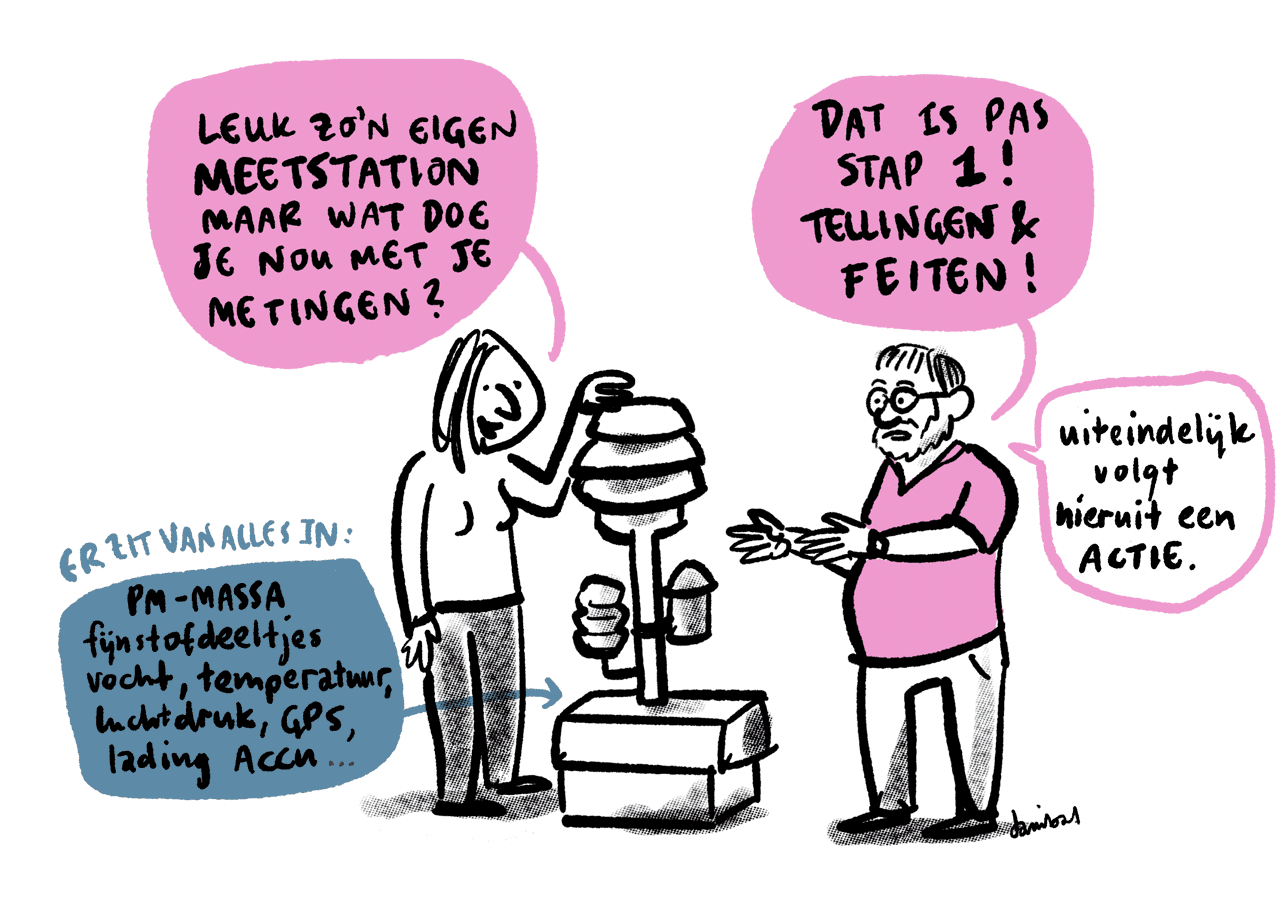How can different stories help citizen science in making impact? Citizen science is research that is conducted together with or by citizens. In the Smart Citizens lab, Waag Futurelab works on projects that support citizen science and help residents improve their living environment. Together with residents, we measure noise, air- and water quality. By measuring the living environment and having access to this data, citizens have a stronger information position when discussing their living environment with governments and companies.
But how do you get a seat at the table? Often it's difficult to reach the right people or involve people who are not so concerned with numbers. Telling different stories about citizen science can help. But how do you do that? We explored it during the Stadskenners meetup organised by Waag Futurelab together with Harmen Zijp (from the WAR in Amersfoort).
Data collection
Citizen scientists often talk with great devotion about how they collect data, but regularly these stories become very technical. Citizen scientist Teus Hagen told us about his research during Stadskenners. For five years, Teus is trying to address the environmental and health nuisance of the mega-stables in Grubbenvorst with the municipality. Together with the inhabitants of Grubbenvorst, Teus started the Foundation Behoud de parel (Preserve the pearl) to measure the air quality. During Stadskenners, Teus enthusiastically spoke about measuring fine dust, nitrogen and ammonia: "Technically, we measure with sensors that measure fine dust by counting the particles. We count off in mass, so we have to convert the counts to mass." He also used models and processes to explain how Behoud de parel is organised.
These stories of data collection, analysis and organisation are needed to reach other researchers and engage them in the research. With this technical information, the data can be checked for reliability and the research can be replicated by others. Because of Teus his knowledge of these aspects, Behoud de parel was able to install a sensor at an official measuring station of the National Institute for Public Health and the Environment (RIVM). Teus and RIVM speak the same language of measurements and figures.
Experience
For people who find the language of numbers and research difficult to understand, it's hard to relate to these stories. To include those people in citizen science, different stories are needed. Stories that focus not on the measurements, but on the people. But how do you tell those stories? During the Stadskenners meetup, we asked a journalist, cartoonist and writer to tell Teus's story in their own way.

The story of journalist Nienke Zoetbrood was the closest to Teus his story. As a journalist, she also uses data in her writing. The difference between Teus' story and Nienke's, is the focus. Nienke focuses not on how but why Teus measures the air. What drives him? "Two mega-farms: one with half a million chickens from the company Kipster, the other with 25,000 pigs. You can smell the latter especially well." writes Nienke. Nobody wants to live in bad smell, everyone understands that. Numbers are present in this way, but they support the personal story.
In his prose, writer Bernhard Cornelissen goes back to the core of citizen science: the environment you live in, how you experience it and what action you take to improve your environment. If you think something stinks, what do you do with it? And what happens if other people don't experience the same?
"And then there are people, who want more
who don't just want to compare their own stink
who want to take their good, measurable smell
and want that something happens with it
they knock on the door somewhere
a city council, for example
and they say "Do something with that!"
"With what?"
"With the smell!"
"But I don't feel any smell at all!"
Data and experience
People get involved in citizen science through different things, experience, technology, urgency or something else. To reach different people and make an impact, you will need different stories. Stories about methods, measurement and analysis and stories about urgency, experience and feeling. Bringing those stories together creates a reciprocity in the citizen scientist's story, where data analysis and human experience reinforce each other.
Curious about the presentations journalist Nienke Zoetbrood, cartoonist Danibal and prose writer Bernhard Cornelissen? Download the presentations (in Dutch).
Want to meet citizen scientists, experts, journalists, writers or other storytellers?
Visit Koppelting at the WAR in Amersfoort on Monday 7 to 13 August. Waag Futurelab organises a Stadskenners workshop as part of Koppelting. During this workshop, we will work on writing stories based on air-qualitydata. Waag also organises a brainstorming session on smart and liveable cities: what should future research on the city be about?
Check out the programme and join one of the many sessions, or organise a session yourself!


